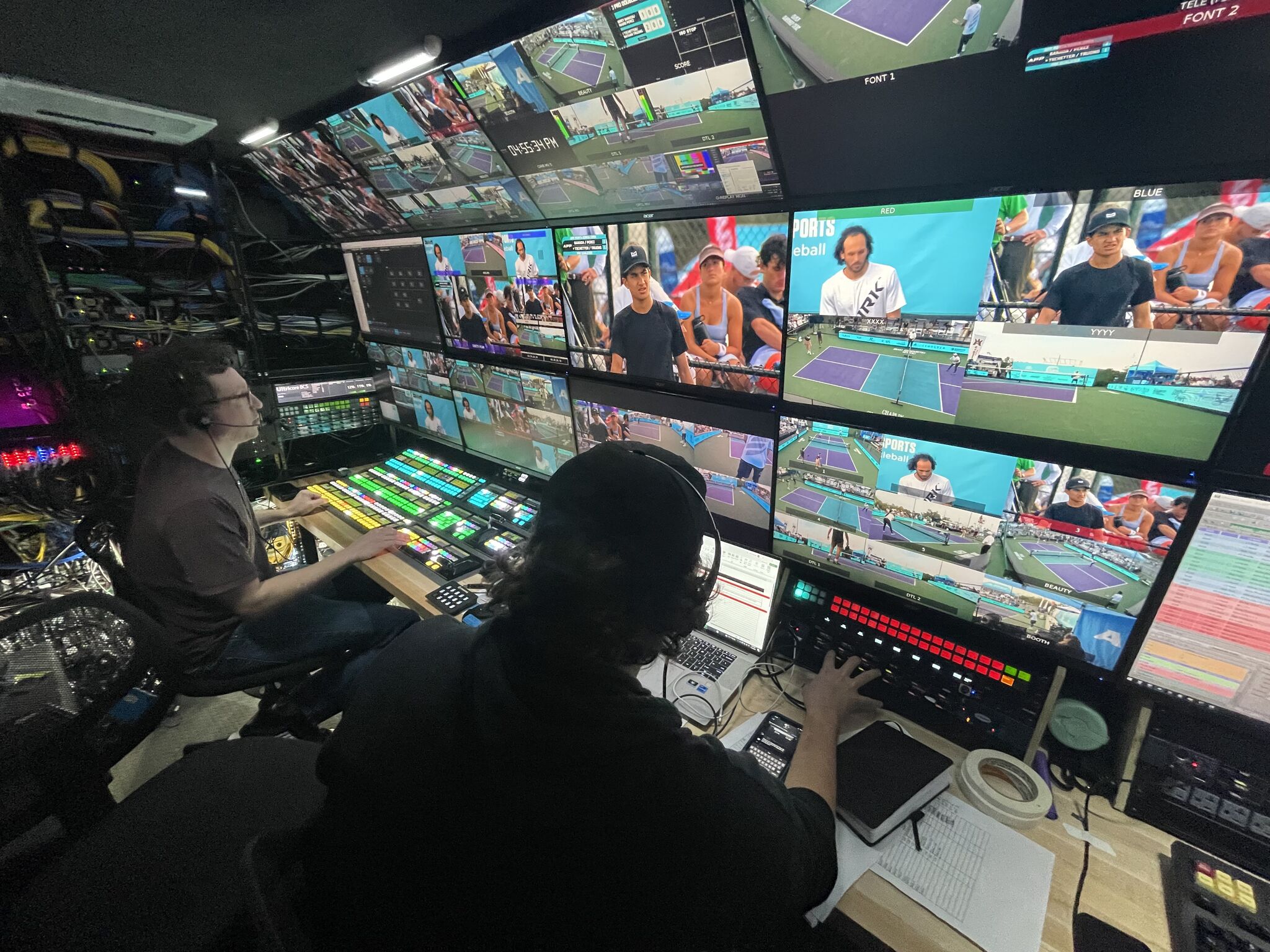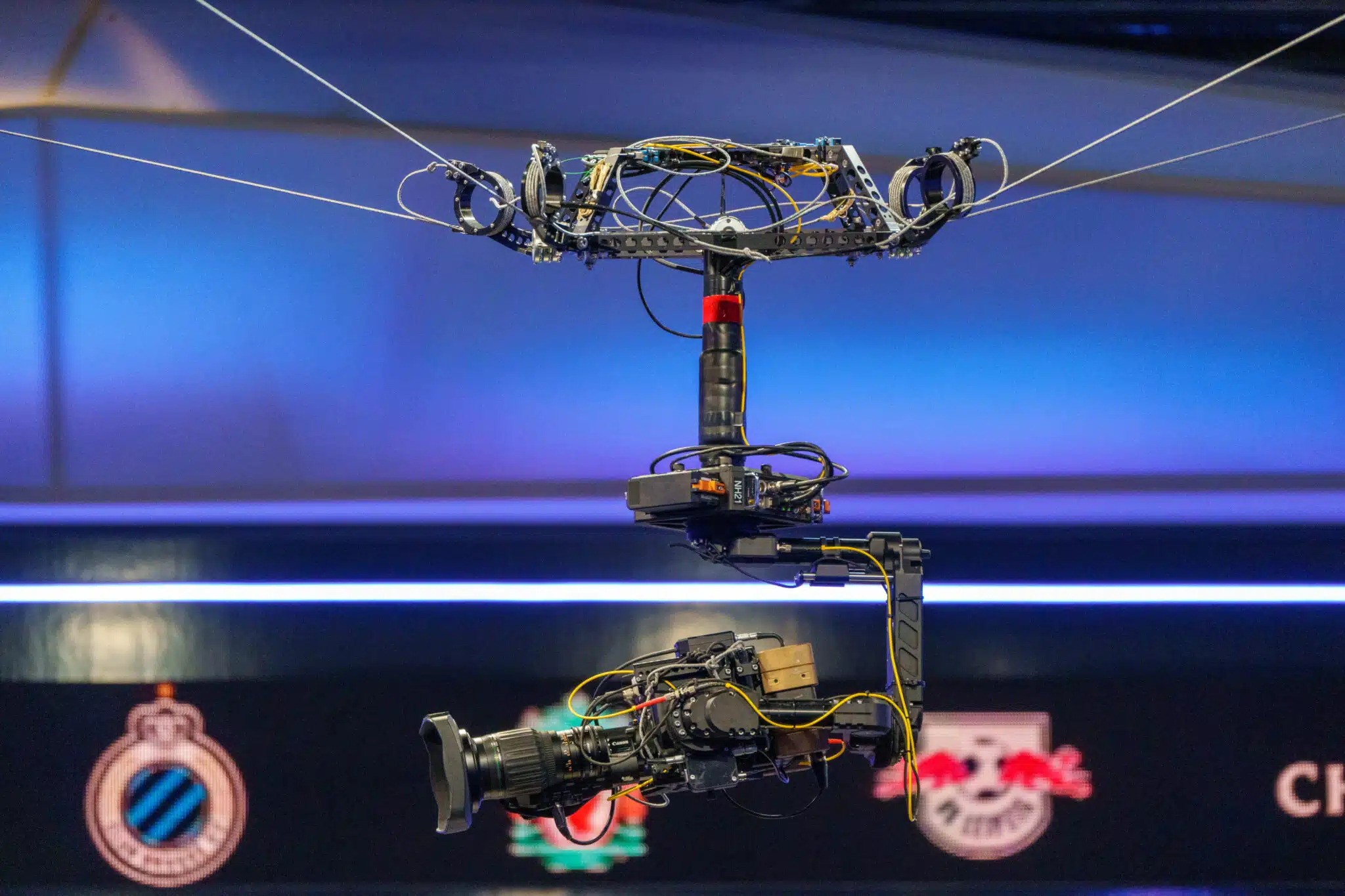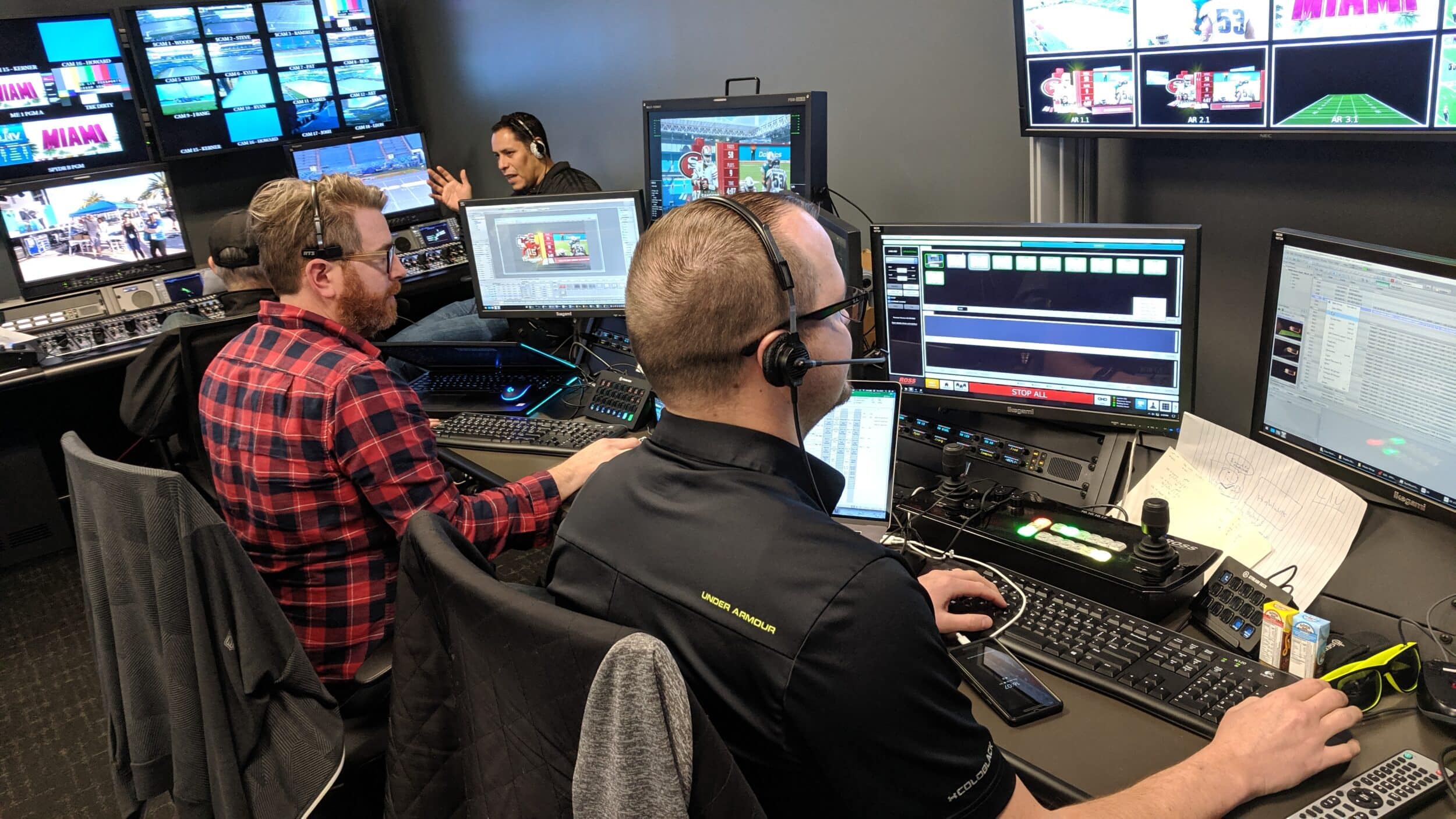February 21, 2024 - Ross Video Team, Education
How Technology is Changing Sports Broadcasting in 2024


Sport fans are a diverse group, but one thing is clear: the closer they are to the action, the better.
They care about high-quality live broadcasts because — if they can’t make it to the match — they want to be as close to that energy as possible. But with competition from video games, live streaming, and social media, the bar for quality is continuously rising.
Here’s how technology is changing sport broadcasting in 2024 and what you can do to keep up.
Today’s audiences demand more from their viewing experiences. They want an interactive experience. They don’t just want to be close to the action — they want to be a part of it.
Ultra-High-Definition (UHD)
UHD brings fans deeper into the action, making it more visually engaging. Viewers will no longer settle for grainy or dull visuals and will turn to another platform or switch off entirely.
Interactive and Personalized Viewing Experiences
Esports and online gaming allow viewers to be part of the story by contributing their narratives through live chats and third-party social media.
Many streaming services offer interactive features, such as the ability to choose camera angles, games, commentary options, and even select specific players to focus on. Personalisation algorithms can also suggest games and content based on individual preferences.
Multi-Camera Angles and 360-Degree Views
360-degree cameras, drones, and spidercams offer viewers more angles and views than ever, allowing them to see more action and get closer to the live experience through a broader range of perspectives.
Second Screen Experiences
Apps and social media platforms offer second-screen experiences, where fans can access additional content, engage in real-time discussions, and participate in polls or quizzes related to the live event.

Real-Time Statistics and Data Visualizations
Advanced analytics and real-time data add depth and colour to in-game analysis. These stats are often integrated into the broadcast as overlays, offering a deeper understanding of the game’s dynamics and player performances.
Augmented Reality (AR) and Virtual Reality (VR)
AR and VR technologies will provide ever-more immersive experiences. VR transports fans to virtual stadiums, while AR can overlay stats and graphics onto the live feed, enriching the viewing experience with informative and interactive elements.
The key to keeping up with ever-evolving technology and expectations without blowing your budget is deciphering which technology is worth investment and which is a fad.
These are the areas we’re seeing sports broadcasters invest in in 2024:
More Powerful and Immersive Technology:
Broadcasters are increasingly investing in cutting-edge technologies, with the focus on:
Interactive and Personalized Content:
Broadcasters are predominantly investing in broadcasting software that allows viewers to customise their experience, such as multi-camera views, camera angle optionality, access to different commentary tracks, or interactive statistical overlays.
Enhancing Streaming Capabilities:
Traditional broadcasters are either developing their own streaming platforms or partnering with existing ones to compete with streaming services. This shift requires investment in robust video production infrastructure to ensure seamless, high-quality streaming experiences.
Adapting to Multi-Platform Broadcasting:
Investments in media asset management and production software that make creating content in multiple formats simple and fast are crucial to meeting your audience on the platforms they flit between.
Engaging with Social Media and Second Screens:
Investment in social media engagement and second-screen experience tech is becoming crucial. These platforms are used for live interaction, fan engagement, and additional content distribution, requiring a strategic content creation and marketing approach.
Data-Driven Decision Making:
Sports broadcasters are investing in data-driven analytics to gain insights into viewer preferences and behaviour, which can guide programming, advertising, and content strategies.
Esports Integration:
Recognising the growing popularity of esports, traditional sports broadcasters are investing in this sector, either by broadcasting esports events or incorporating gaming elements into conventional sports broadcasts.
Sports broadcasting is changing faster than ever, but the goal remains the same: to tell great stories.
As the way fans interact with stories evolves, your approach to storytelling should change too. To succeed, you must invest in flexible, future-focused tools that expand your options and flexibility, not restrict them.
Recently, we brought together some of the brightest minds in sports broadcasting, including Jamie Oakford, Director of some of the world’s biggest sporting events and Andy Beale formerly of BT Sport, to discuss shifting audience habits, and which technology is changing the game.
Watch the full recording below now.

Live sports are high-energy entertainment. That’s why it’s one of the only remaining genres people still feel they must tune in to live for the whole experience. …

The way audiences consume sport is changing faster than many broadcasters can keep up. Technology has given broadcasters more flexibility and control than ever before but has …
Recently, we brought together some of the brightest minds in sports broadcasting to discuss how audience habits are changing, and what technology they are investing in to stay ahead of the curve.